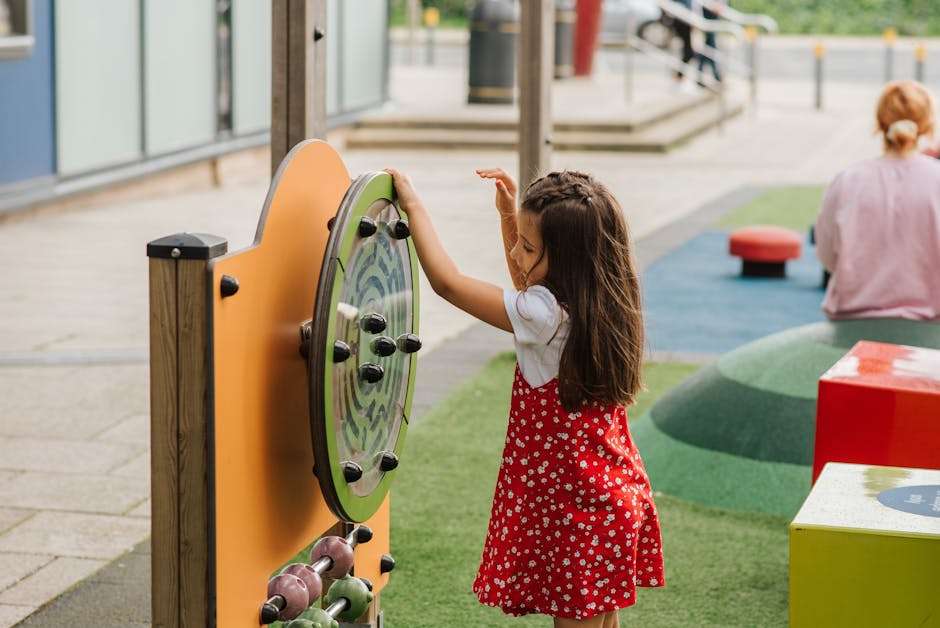Interactive Toys: How They’re Changing the Way Kids Play
As technology continues to evolve, so does the landscape of childhood play. Gone are the days when toys were merely static objects. Now, interactive toys are revolutionizing playtime, blending learning with fun in ways we never imagined. In this blog post, we’ll explore how these innovative toys are changing the way kids play, engage, and learn. 🎉
Table of Contents
1. Introduction
2. The Rise of Interactive Toys
3. Educational Benefits of Interactive Toys
4. Social and Emotional Development
5. Popular Interactive Toys Today
6. The Future of Play
7. Conclusion
8. FAQ Section
The Rise of Interactive Toys
Interactive toys have become a staple in playrooms worldwide. With advancements in technology, toys can now talk, move, and even respond to a child’s actions, creating a dynamic and engaging play experience. This shift has been driven by a desire to merge play with education, providing children with tools that stimulate their minds while entertaining them.
These toys often incorporate elements such as artificial intelligence, augmented reality, and sensory feedback, making them more engaging than traditional toys. From robots that teach coding to dolls that can have conversations, the possibilities are endless!
Educational Benefits of Interactive Toys 📚
One of the most significant advantages of interactive toys is their educational value. Here’s how they contribute to learning:
1. Enhancing Cognitive Skills
Interactive toys challenge children’s problem-solving abilities and critical thinking skills. Many toys require kids to follow instructions, recognize patterns, or solve puzzles, all of which enhance cognitive development.
2. Encouraging Creativity
These toys often have open-ended play scenarios, encouraging kids to use their imagination. Whether building a robot or creating a story with a talking doll, children are inspired to think creatively.
3. Fostering a Love for Learning
By integrating educational content into play, interactive toys make learning fun. Kids are more likely to engage with educational material when it’s presented in an enjoyable and interactive manner.
Social and Emotional Development 🤝
Interactive toys also play a crucial role in developing social and emotional skills:
1. Building Empathy and Communication
Toys that simulate conversation or require cooperative play help children develop empathy and improve their communication skills. They learn to express themselves and understand others’ perspectives.
2. Encouraging Teamwork
Many interactive toys are designed for group play, encouraging children to work together to achieve a common goal. This promotes teamwork and helps kids learn the value of collaboration.
3. Boosting Confidence
Successfully completing tasks with interactive toys can boost a child’s confidence. They learn to take pride in their accomplishments, which is crucial for their emotional development.
Popular Interactive Toys Today 🚀
Let’s take a look at some of the most popular interactive toys that are currently captivating kids:
1. Coding Robots
Toys like Botley and Dash are teaching kids the basics of coding through play. These robots can be programmed to move, dance, and solve puzzles, making coding accessible and fun.
2. Smart Dolls
Dolls like Luvabella and My Friend Cayla can hold conversations, respond to touch, and learn from their interactions with children. They provide a unique, lifelike experience.
3. Augmented Reality Kits
AR toys, such as Osmo, combine physical play with digital interaction, offering activities that range from drawing to math challenges, all enhanced by augmented reality.
The Future of Play 🔮
The future of interactive toys is incredibly promising. As technology advances, we can expect even more sophisticated toys that further integrate learning, creativity, and play. The focus will likely shift towards even more personalized experiences, adaptive learning capabilities, and sustainable materials.
Moreover, as society becomes more aware of the importance of inclusivity, future toys will likely cater to a broader range of abilities and interests, ensuring that every child can enjoy the benefits of interactive play.
Conclusion
Interactive toys are not just a trend; they’re a transformative force in the world of play. By combining education with entertainment, they offer children a rich, engaging experience that supports their development across multiple domains. As we look to the future, the potential for these toys to revolutionize play and learning is limitless. So, let’s embrace the change and watch as our children thrive in this new era of play! 🌟
FAQ Section
1. What are interactive toys?
Interactive toys are toys that respond to a child’s actions using technology, such as sensors, AI, or augmented reality, to provide an engaging play experience.
2. How do interactive toys benefit children’s development?
They enhance cognitive skills, encourage creativity, foster a love for learning, and aid in social and emotional development, including communication and teamwork.
3. Are interactive toys suitable for all ages?
Many interactive toys are designed for specific age groups, but there are options available for a wide range of ages, from toddlers to pre-teens.
4. Can interactive toys replace traditional toys?
While interactive toys offer unique benefits, traditional toys still play an essential role in child development, providing different sensory and imaginative experiences.
5. Are interactive toys safe for children?
Most interactive toys are designed with safety in mind, but it’s essential for parents to monitor play and choose age-appropriate toys to ensure a safe experience.
